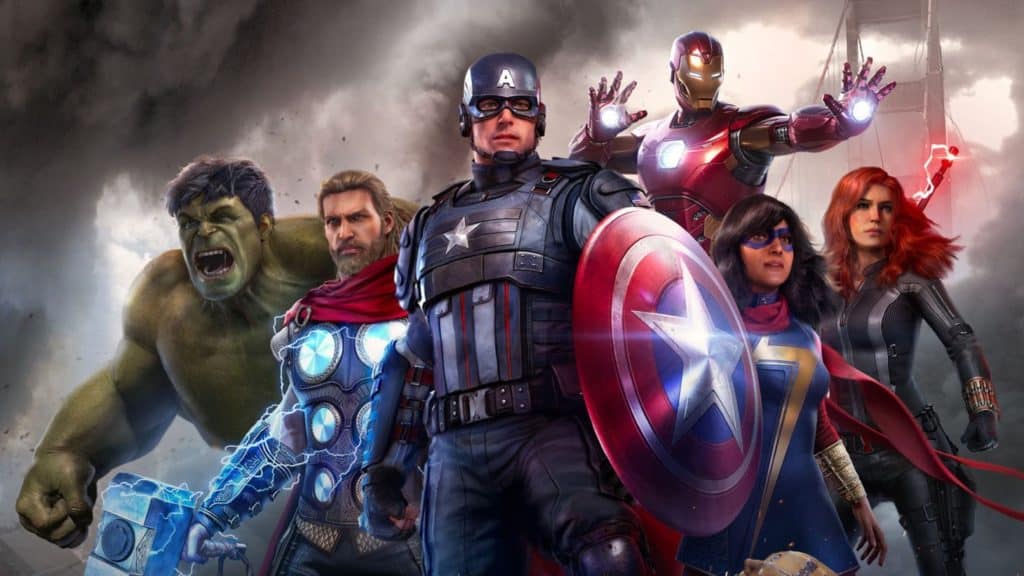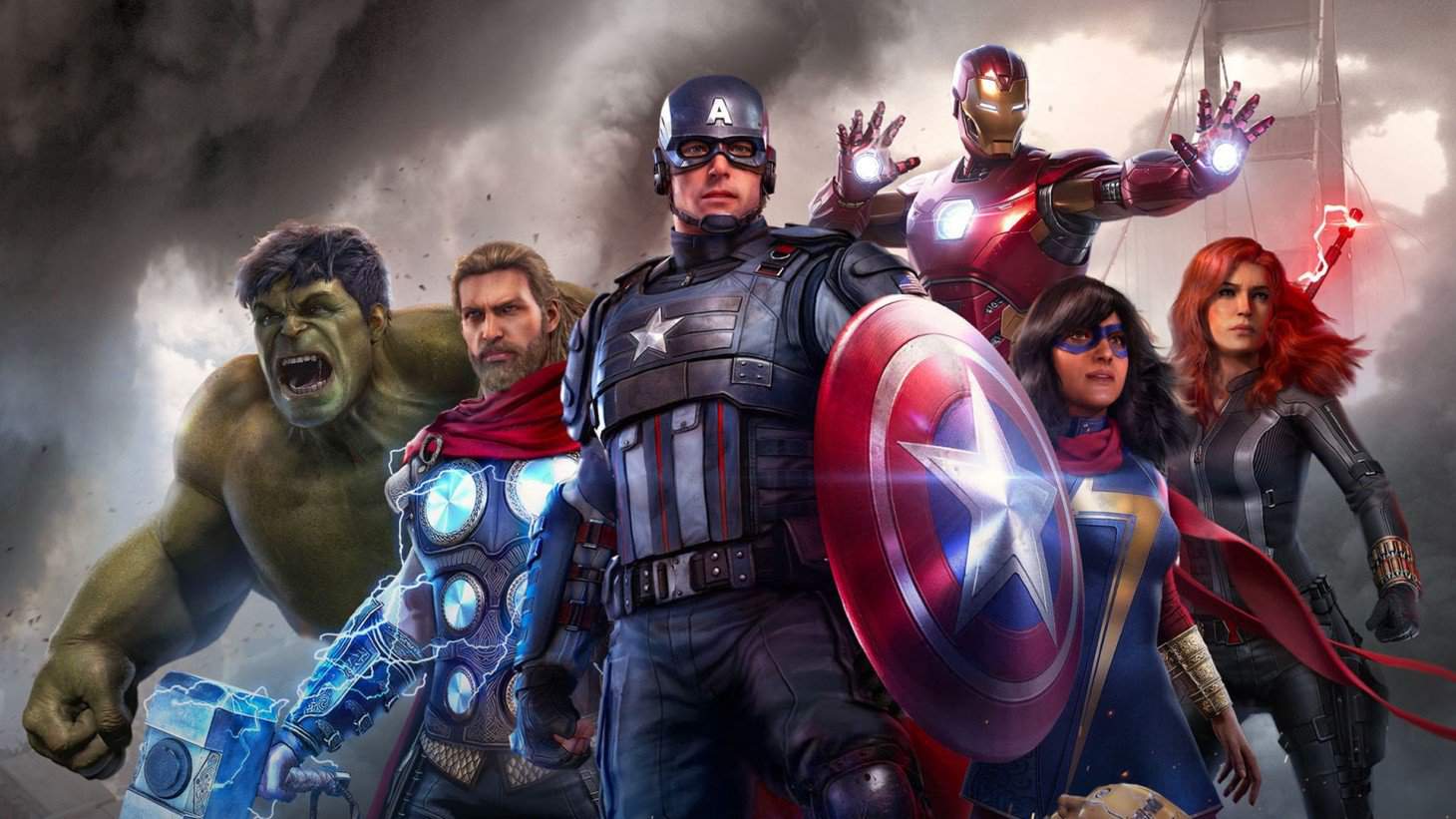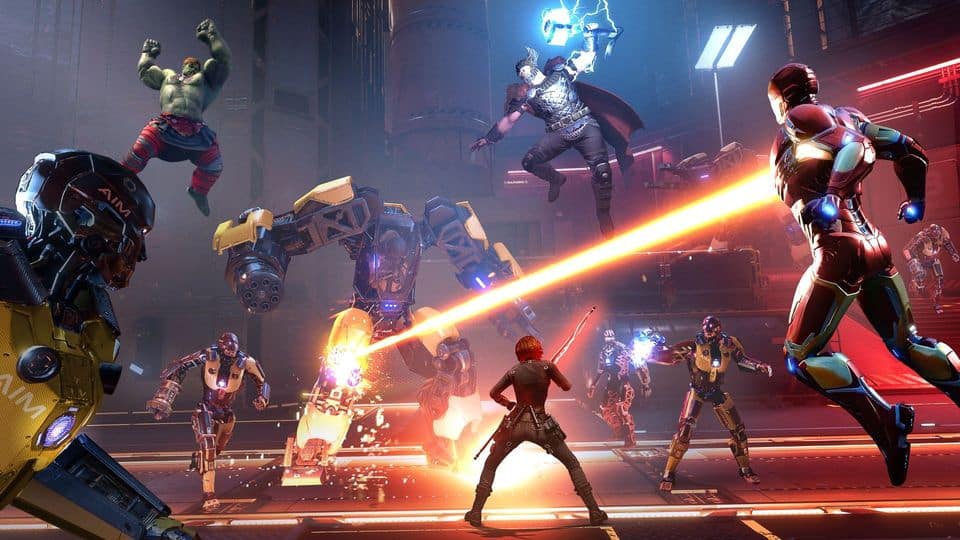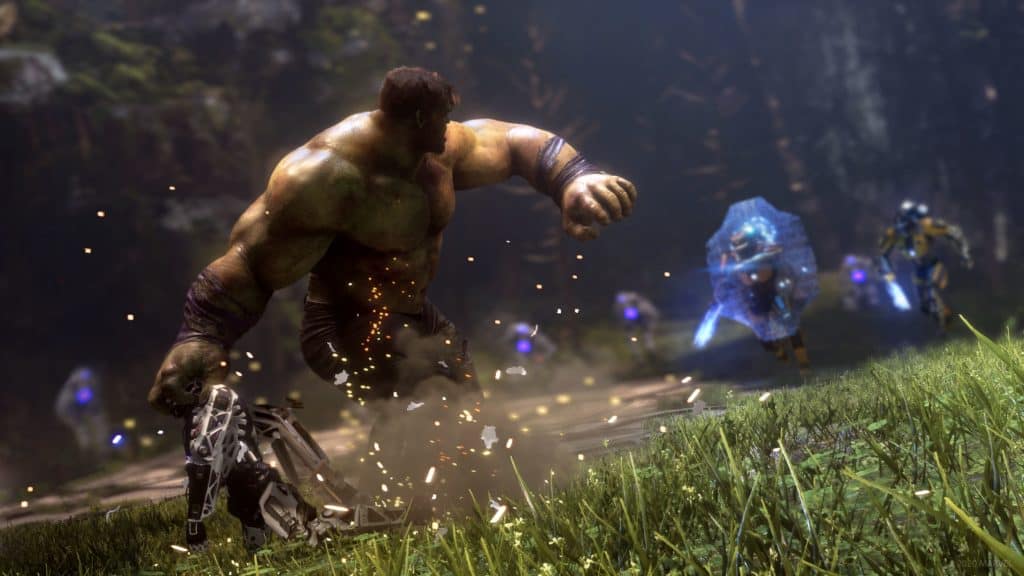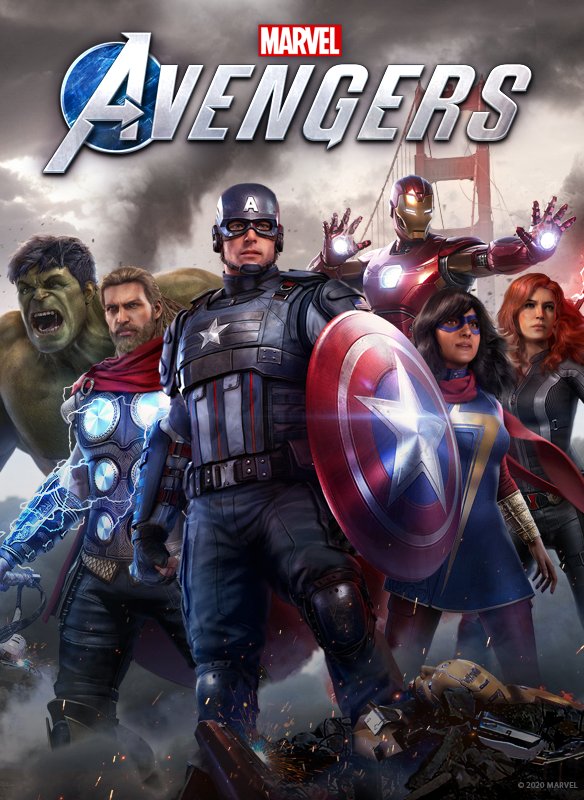You can trust VideoGamer. Our team of gaming experts spend hours testing and reviewing the latest games, to ensure you're reading the most comprehensive guide possible. Rest assured, all imagery and advice is unique and original. Check out how we test and review games here
It’s only right that Marvel’s Avengers should begin with a celebration. The opening of the supergroup’s West Coast headquarters is in full swing, in San Francisco, and the frenzy, as thousands gather, praying for a glimpse of shield or hammer, is akin to the ribbon-cutting of a new shopping mall. Above this baying horde cruises Kamala Khan, an incessant young girl who dreams of one day being the kind of masked slugger capable of such effective franchising. She has been jetted in from Jersey City, as a finalist in a fan fiction competition, and she is told, after playing a Thor-themed arcade amusement, that, “Almost worthy is still pretty good.” It goes without saying that, when the stars swoop onto the stage, the parade is apocalyptically rained on. The question is: between our costume-wearing, worthy overlords and the tech-infused forces of protest—whose leader later argues that he “only wants to free us from being at the mercy of the powerful”—who do you root for?
The answer, of course, for the Marvel-mad will be easy, and the occasion of the game’s release will be akin to its early minutes—a matter of fevered worship. Short of that, the first thing we might do is applaud the fact that Marvel’s Avengers exists, that it can be bought and booted up, and that there is fun here to be had. After finishing the single-player story and a slew of online multiplayer skirmishes, I felt just as I did in 2012, reeling from the cinema, having watched The Avengers, and wishing to congratulate the director, Joss Whedon, not merely for shepherding a functioning film to our screens but for shunting and scraping the gigantic moving parts of a machine into place—and not having it topple into tedium.
So how has the developer, Crystal Dynamics, done it? First, there is the plot, which provides an army of robots, called Synthoids, ripe for conscience-free wrecking. The action resumes five years on from the fateful events of the opening, given the calendar-darkening designation of “A-Day,” which saw, in order of narrative importance, (a) the breakup of the Avengers, having been blamed for the disaster, (b) the leak of a superpower-spreading mist, and (c) the deaths of thousands. A shady organisation called Advanced Idea Mechanics, A.I.M. for short, has sprang up, promising a solution to the problem of the “Inhumans”—those suffering from being newly super. One such sufferer is, wouldn’t you know it, Ms. Khan, who, buoyed by her father Abu’s advice—“‘Good’ isn’t a thing you are. It’s a thing you do”—attempts to reunite the Avengers. Second, there is the structure: the campaign is parcelled out in a series of missions, granting you control of each hero, all of which entail travelling to a location and, abiding by Abu’s ethos, beating the s*** out of whomever we find there.
The beating is, by and large, decent enough. You have a light and heavy attack, three charge-up specials, and a dodge: hardly what you’d call advanced idea mechanics, but it provides both chew and crunch. Freshly junked Synthoids crumple into fiery parts, and your human foes are zipped into custard hazmat suits, heightening their resemblance to punching bags. It won’t fully satisfy, in terms of weight and whip, those who enjoyed Spider-Man or the Batman: Arkham games, but there are sufficient fireworks—whether launched from Iron Man’s palms or lashed down from the heavens by Thor’s hammer—to entertain.
And part of the fun, indeed, is in switching things up. Kamala’s abilities are the sort you might contract after being bitten by a radioactive rubber band; she can elongate and expand, ballooning her fists into elastic wrecking balls and warping out of harm’s way. Captain America and Black Widow are more traditional brawlers, armed with long-range options; she with pistols, he with Frisbeeish shield. Iron Man possesses the properties of a bipedal Jump Jet, while Thor and Hulk opt for all-out wrath. The gulf of difference between characters can be leapt in a single, short bound, with no drastic divergences; they all must occupy the bet-hedging space of centre stage, as if ready, at any moment, to peel off and pilot their own solo projects.
The test, for Marvel’s Avengers, was always going to be if it can match Ms. Khan for sheer stretchability, and keep the endgame going after the credits. Hence the gear, strewn throughout the levels, which you collect and cluster onto your chosen fighters, the better to buff their strength, speed, and, presumably, their aptitude for cooking, sewing, suit-washing, and other domestic duties. To my great shame, I lack the rapacious passion that might fuel the ongoing search for more; my enthusiasm went about as far as holding the “Equip Best Gear” button. By way of further longevity, Crystal Dynamics has served up a stream of multiplayer missions, and thus raised the question that hangs, like a cloud, over the A-Day of the game’s launch. Is there enough here—be it objectives, motivations, or variety—to spin out over an open-ended span, to wage an infinity war against the likes of, say, Destiny 2? I am doubtful, but that may prove foolish in the face of a rapt fanbase, and what game can’t be suffused with long-term joys, when you have friends, headsets, humour, and beer? When it comes to online multiplayer games, “good” isn’t only something they are; it’s something you do.
What I can conclusively report is the sterile feel of Marvel’s Avengers. It’s a shame that the art direction, by Brenoch Adams and Josh Bapst, shuns the possibilities of not only the comics but of other Avengers-boasting titles, like Marvel vs. Capcom and Marvel: Ultimate Alliance. If you’re hoping for hues and muscles as bursting as bubblegum, you’re in for a dispiriting time. The characters here seem to have been plucked from an unlicensed browser game, sidling just close enough to the actors in the movies while ducking the watchful glare of any Hollywood patent attorneys. Take Hulk, for example. We get Bruce Banner, in rimless spectacles and plumb-coloured shirt, played, with shuffling timidity, by Troy Baker—the prevailing effect of which is that you end up really missing Mark Ruffalo. And, when he bulges free of his clothing, he isn’t even that green—more a bruised yellow-brown, like a seriously pissed-off banana. What gives? It made me miss the old Ang Lee design: the violent pop of those purple trunks, and the radioactive snot-green of his skin. It was worth putting up with the incredible sulk of Eric Bana just to get a peek.
Meanwhile, Nolan North, as Tony Stark, clamps on the same armour of quips that Robert Downey Jr. wore to shield himself from seriousness; only, North’s is clearly the Mark I version, its humour core running at half-capacity. Laura Bailey does her level best with a bland Black Widow, while Jeff Schine and Travis Willingham, Captain America and Thor, respectively, can’t bottle the lightning of their big-screen counterparts. And Sandra Saad, who voices Kamala, is sidled with a character who constantly narrates every nervous second of her life. The other problem is that the plot, written by Shaun Escayg and John Stafford, frets over the fate of a world that it isn’t willing, or interested, to depict. No inch is given to the grime of surface living. We get snowstruck wastes, a parched, canyoned sweep of Utah, and the Pacific Northwest, which, with its tree-mounted metal platforms, looks more like Endor.
When we are served up an urban sprawl—Manhattan, no less—we find it bare. Iron Man is told that “AIM has evacuated the city due to heavy Inhuman activity,” and he replies, “Sounds like an excuse to experiment on dangerous technology.” Sorry, Tony, it sounds like an excuse for a risk-free romp through streets as fabricated as the Synthoids that patrol them. The whole thing made me crave those moments, in Spider-Man, where you would catch the subway and sit in the sweaty fug of your fellow New Yorkers. Call it heavy human activity. The air of artificiality isn’t helped by the chirring of visual bugs and, on the base model PS4, severe framerate dips. Supposedly, the game is targeted for the Xbox One X and the PS4 Pro upwards, into the next generation—future-proofing at the expense of the present. These gripes, I expect, won’t bother those gripped by the prospect of continuous Avenging, who will frantically anticipate the raft of new heroes being piped in via DLC. Power to them. There may well be the feeling of a missed opportunity here, but no matter. Almost worthy is still pretty good.
Developer: Crystal Dynamics
Publisher: Square Enix
Available on: PlayStation 4 [reviewed on], Xbox One, PC, Stadia
Release date: September 4, 2020
To check what a review score means from us, click here.
Marvel’s Avengers
- Platform(s): Google Stadia, PC, PlayStation 4, Xbox One
- Genre(s): Action
